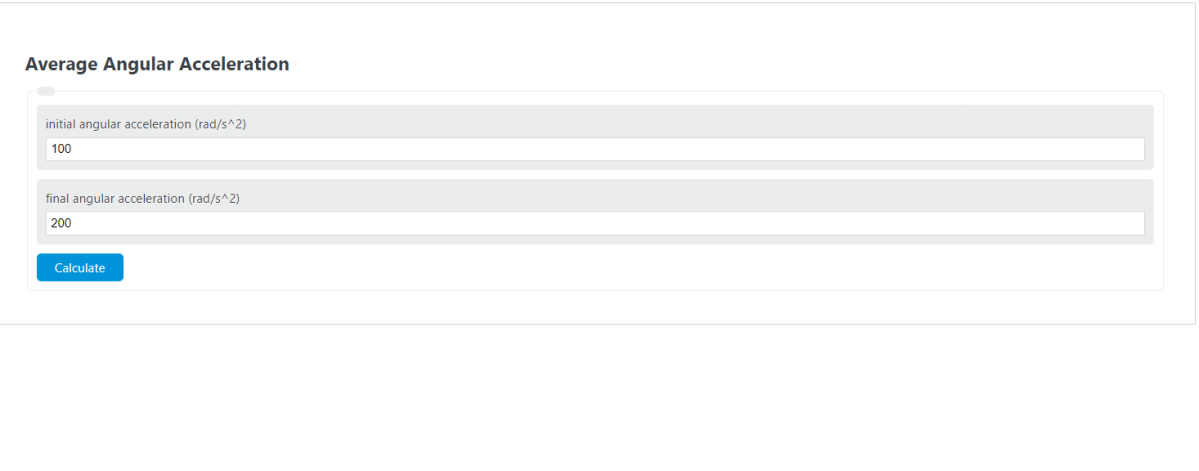Enter the initial angular acceleration and the final angular acceleration into the calculator to determine the Average Angular Acceleration.
- All Acceleration Calculators
- Average Acceleration Calculator
- Angular Acceleration Calculator
- Maximum Acceleration Calculator
- Newtons to Acceleration Calculator
Average Angular Acceleration Formula
The following equation is used to calculate the Average Angular Acceleration.
AAA = (Ai + Af) / 2
- Where AAA is the Average Angular Acceleration (rad/s^2)
- Ai is the initial angular acceleration (rad/s^2)
- Af is the final angular acceleration (rad/s^2)
To calculate the average angular acceleration, sum the initial and final accelerations, then divide by 2.
What are the units for Average Angular Acceleration?
In the International System of Units, also known as SI units, the units for Average Angular Acceleration are rad/s^2.
How to Calculate Average Angular Acceleration?
Example Problem:
The following example problem outlines the steps and information needed to calculate the Average Angular Acceleration.
First, determine the initial angular acceleration. In this example, the initial angular acceleration is calculated or measured to be 100 (rad/s^2).
Next, determine the final angular acceleration. For this problem, the final angular acceleration is determined to be 200 (rad/s^2).
Finally, calculate the Average Angular Acceleration using the formula above:
AAA = (Ai + Af) / 2
Inserting the values from above and solving the equation with the imputed values gives:
AAA = (100+ 200) / 2 = 150 (rad/s^2)
FAQ
What is the significance of measuring Average Angular Acceleration in physics?
Measuring Average Angular Acceleration is crucial in physics as it helps in understanding the rotational dynamics of an object. It provides insights into how the rate of rotation of an object changes over time, which is essential for analyzing rotational motion and designing mechanical systems that involve rotating components.
Can Average Angular Acceleration be negative?
Yes, Average Angular Acceleration can be negative. A negative value indicates that the object is slowing down in its rotational motion, meaning the final angular acceleration is less than the initial angular acceleration.
How does Average Angular Acceleration differ from Instantaneous Angular Acceleration?
Average Angular Acceleration is calculated over a finite interval of time and gives the average rate at which angular velocity changes. In contrast, Instantaneous Angular Acceleration measures the rate of change of angular velocity at a specific moment in time, providing a more precise understanding of an object’s rotational motion at that instant.
